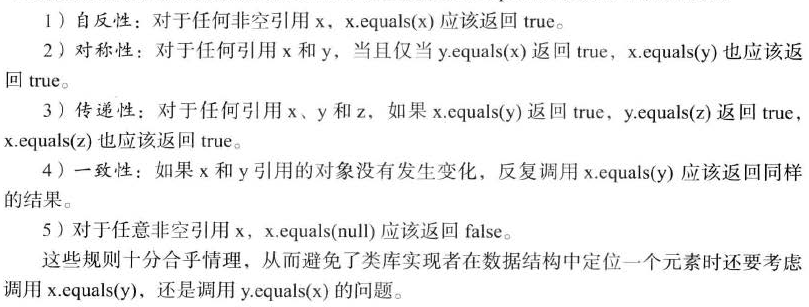这个是博主对hashcode的初步理解,以后加深了会再来更新:
1、hashcode是什么?
hashcode是对象的散列码,不同的对象几乎不一样,说几乎是因为还是可以一样的。
特点:每一个对象都有hashcode,默认的值是每一个对象的地址。
2、hashcode的作用:
博主已知的方便用户使用散列表插入数据,我们知道,集合有两种,list----可重复,set----不可重复。
其中set实现不可重复就需要使用到hashcode和equals方法。
散列表set是使用链表数组实现的,每一个列表被称作桶,而查找表中对象的位置使用的方法是:
1)、计算对象的散列码hashcode;
2)、公式:hashcode%桶数=索引;eg:某一个对象的散列码是76268,有128个桶,那么对应的这个对象的位置就是在第108个桶中。
而在插入对象到散列表中的时候使用的是同样的过程,只是这个时候可能会发现原有的位置被占用了,桶已经满了,这个时候就需要equals方法进行判断是否相等。
所以:
在重构equals方法的时候一定要重构hashcode方法,不然使用散列表的时候桶都找不到,更不用说下一步的判断是否是同一个对象了。
下面是示例代码:
public static void main(String[] args) {
String hello = "hello";
StringBuilder helloSB = new StringBuilder(hello);
String hello2 = "hello";
StringBuilder hello2SB = new StringBuilder(hello2);
System.out.println("hello's hashcode:" + hello.hashCode());
System.out.println("helloSB's hashcode:" + helloSB.hashCode());
System.out.println("hello2's hashcode:" + hello2.hashCode());
System.out.println("hello2SB's hashcode:" + hello2SB.hashCode());
Set stringSet = new HashSet();
Set sbSet = new HashSet();
stringSet.add(hello);
System.out.println("======" + stringSet.contains(hello2));
stringSet.add(hello2);
sbSet.add(helloSB);
sbSet.add(hello2SB);
Person person1 = new Person(1, "eke");
Person person2 = new Person(1, "eke");
Set personSet = new HashSet();
personSet.add(person1);
personSet.add(person2);
PersonWithHashCode code1 = new PersonWithHashCode(1, "eke");
PersonWithHashCode code2 = new PersonWithHashCode(1, "eke");
Set codeSet = new HashSet();
codeSet.add(code1);
codeSet.add(code2);
System.out.println(stringSet.size());
System.out.println(sbSet.size());
System.out.println(personSet.size());
System.out.println(codeSet.size());
}
运行结果:
hello's hashcode:99162322 helloSB's hashcode:39219479 hello2's hashcode:99162322 hello2SB's hashcode:2031787571 ======true 1 2 2 1
下面是PersonWithHashCode,Person和PersonWithHashCode相比只是缺少了hashCode方法。
贴这个代码还有一点是重构了equals方法,这个方法的重构是要遵循一定规则的(图片来自《java核心技术卷II》):

public class PersonWithHashCode {
private int id;
private String name;
public PersonWithHashCode(int id, String name) {
this.id = id;
this.name = name;
}
public int getId() {
return id;
}
public void setId(int id) {
this.id = id;
}
public String getName() {
return name;
}
public void setName(String name) {
this.name = name;
}
@Override
public int hashCode() {
return id * 24 + name.hashCode();
}
@Override
public boolean equals(Object object) {
if (object == this)
return true;
if (object == null)
return false;
if (getClass() != object.getClass())
return false;
PersonWithHashCode person = (PersonWithHashCode) object;
return this.id == person.id
&& Person.StringUtils.compare(name, person.getName());
}
static class StringUtils {
static boolean compare(String a, String b) {
if (a == null && b == null)
return true;
if (a == null && b != null) {
return false;
}
if (a != null && b == null)
return false;
return a.equals(b);
}
}
}